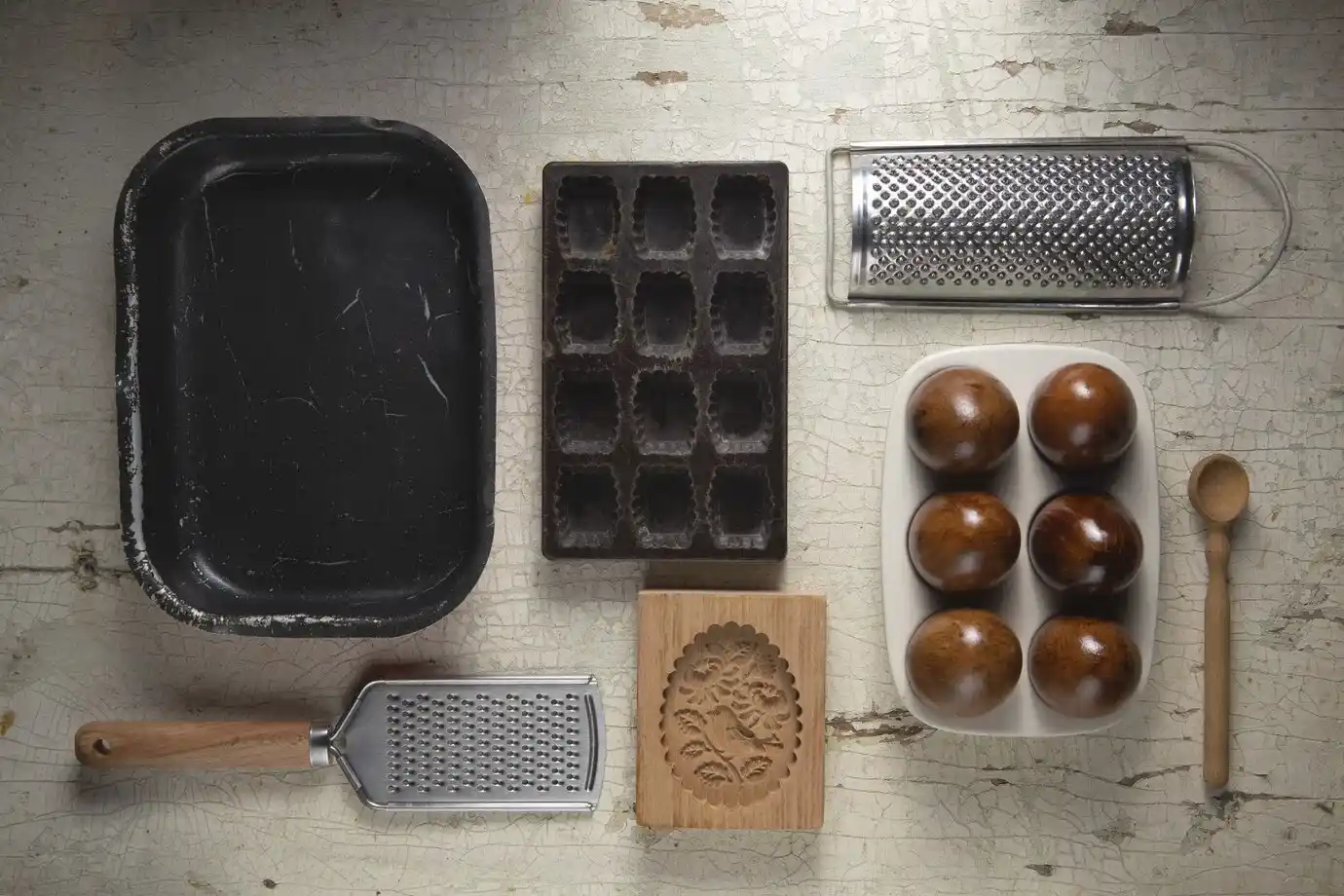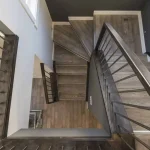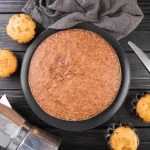Understanding the capacity of a 9 x 13 baking pan is essential for various recipes. It’s a common size, frequently called for in many baking and cooking tasks. But how much does it hold exactly? And why does it matter? Let’s dive into this topic, blending expert advice and personal experiences to give you a clear, easy-to-understand answer.
Table of Contents
ToggleThe Basics: Understanding Pan Dimensions and Capacity
A 9 x 13 baking pan is a staple in many kitchens. These dimensions refer to the length and width of the pan in inches. However, when we talk about its capacity, we need to consider its depth as well.
Most standard 9 x 13 pans have a depth of about 2 inches. To find the volume in quarts, we can use a simple mathematical formula:
Volume=Length×Width×Height
Converting cubic inches to quarts (since there are 57.75 cubic inches in a quart):
Volume in Quarts= Length×Width×Height/57.75
For a standard 9 x 13 x 2 inch pan:
Volume in Quarts=57.759×13×2≈4 quarts
So, a 9 x 13 baking pan holds approximately 4 quarts.
Why Pan Capacity Matters
Understanding the capacity of your baking pan is crucial for several reasons:
- Recipe Accuracy: Many recipes specify the size of the baking dish to ensure the correct cooking time and even distribution of heat. Using the wrong size can lead to undercooked or overcooked food.
- Portion Control: Knowing the capacity helps in planning portions, especially for larger gatherings.
- Consistency: For bakers, consistency is key. Using the correct pan ensures that your baked goods come out perfectly each time.
The Importance of Knowing Pan Capacity
I remember the first time I tried baking lasagna in a pan that wasn’t quite the right size. It was a 9 x 13 recipe, but I used a slightly smaller dish, thinking it wouldn’t make much difference. Halfway through the cooking time, the lasagna started to overflow, creating a mess in the oven. Not only did it take longer to clean, but the lasagna didn’t cook evenly, with some parts being too dry and others undercooked. That experience taught me the importance of using the right-sized pan as specified in the recipe.
Expert Insights on Baking Pans
Experts agree that the right pan can make a big difference in your cooking and baking outcomes.
- Julia Child once said, “The quality of your cookware can significantly impact the outcome of your baking. Invest in good-quality pans for consistent results.” This advice underscores the importance of using reliable and appropriately sized pans.
- Dorie Greenspan adds, “Understanding the different types of baking pans and their properties is essential for achieving desired results. Experiment with various pans to discover your preferences.” This experimentation can help you understand how different materials and sizes affect your dishes.
- America’s Test Kitchen emphasizes preparation: “Properly preparing your baking pans is crucial for preventing sticking and ensuring even baking. Greasing and flouring are essential steps.”
Practical Tips for Using Your 9 x 13 Pan
Here are some practical tips to ensure you get the best results from your 9 x 13 baking pan:
- Follow Recipe Instructions: Always adhere to the specified pan size in your recipe to ensure proper cooking times and outcomes.
- Prepare Your Pan: Grease or line your pan as required. This step can prevent sticking and make cleanup easier.
- Check for Warping: Over time, pans can warp, which affects heat distribution. Ensure your pan is in good shape for even cooking.
- Consider Material: The material of your pan can influence baking. Metal pans heat up and cool down quickly, whereas glass pans retain heat longer. Choose based on what you’re baking.
- Monitor Baking Times: If you have to use a different sized pan, keep a close eye on baking times. A larger or smaller pan can alter the time needed for your dish to cook properly.
Exploring Different Types of 9 x 13 Pans
While the capacity remains consistent, the material of your 9 x 13 pan can affect your cooking:
- Metal Pans: Excellent for achieving a crisp crust and even browning. They are typically preferred for baking cakes and brownies.
- Glass Pans: Retain heat longer, which can be beneficial for dishes that need to stay warm, like casseroles. However, they may require adjustments in baking time and temperature.
- Ceramic Pans: Often used for presentations, they distribute heat evenly but slowly. Ideal for dishes that require gradual, even heating.
Food Network suggests choosing the right pan based on the recipe and desired outcome: “Baking pans come in various materials, each with its own advantages. Choose the right pan based on the recipe and your desired outcome.”
Maintenance and Care for Longevity
Proper care can extend the life of your baking pans:
- Avoid Abrasive Cleaners: These can damage the surface of your pan. Instead, use gentle, non-abrasive cleaners.
- Hand Wash When Possible: Although some pans are dishwasher safe, hand washing can prolong their life.
- Store Properly: Avoid stacking heavy items on top of your pans to prevent warping.
Martha Stewart emphasizes this: “A well-maintained baking pan can last for years. Proper cleaning and storage are essential for prolonging its lifespan.”
Conclusion
Understanding that a 9 x 13 baking pan holds approximately 4 quarts is more than just a fun fact—it’s essential for successful cooking and baking. By using the right pan and taking good care of it, you ensure your dishes come out perfectly every time.
Next time you grab your 9 x 13 pan, you’ll know exactly how much it holds and why that’s important. Whether you’re baking a classic lasagna or a rich chocolate cake, this knowledge will help you achieve the best results.
Remember, as King Arthur Baking Company advises, “The size and shape of your baking pan can affect baking times and results. Always follow recipe instructions carefully.” This way, you’ll enjoy delicious, consistent results every time you bake.
And to wrap up with a bit of personal touch – my grandma always said, “A good baker knows their pans like the back of their hand.” She wasn’t wrong. Knowing your tools is half the battle in the kitchen. Happy baking!
Share via:
Related posts:
 How to Reset Filter Light on Samsung Fridge: A Step-by-Step Guide
How to Reset Filter Light on Samsung Fridge: A Step-by-Step Guide
 Chill Out: Choosing the Perfect Refrigerator for Your Kitchen
Chill Out: Choosing the Perfect Refrigerator for Your Kitchen
 Entertaining Essentials: Refrigerators for Hosting Guests
Entertaining Essentials: Refrigerators for Hosting Guests
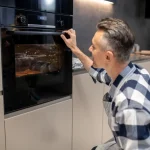 Fridge Repair or Replace? How to Decide
Fridge Repair or Replace? How to Decide
 Refrigerator Hacks: Clever Ways to Maximize Your Fridge Space
Refrigerator Hacks: Clever Ways to Maximize Your Fridge Space
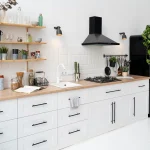 5 Ways Your Kitchen Can Make Your Life Easier
5 Ways Your Kitchen Can Make Your Life Easier
 Kitchen Remodel on a Budget? We’ve Got You Covered!
Kitchen Remodel on a Budget? We’ve Got You Covered!

